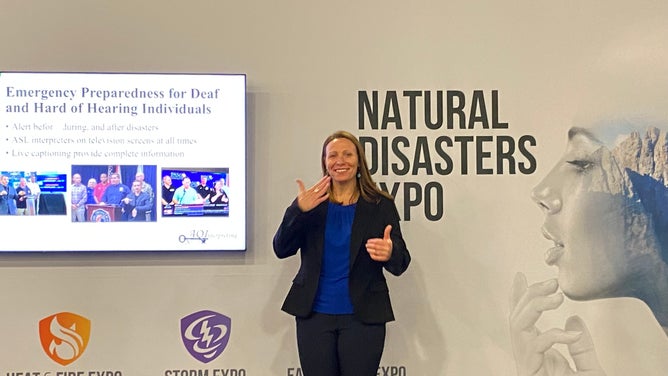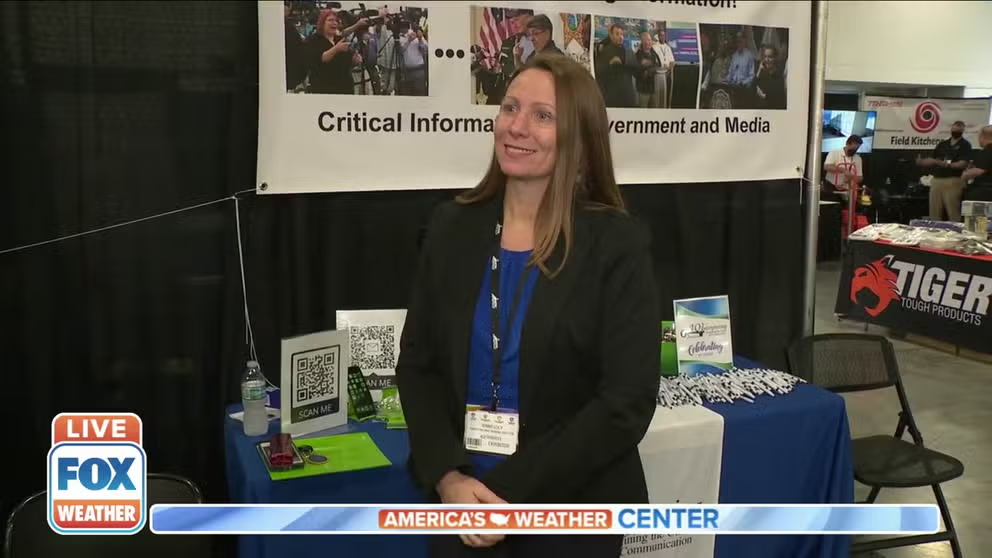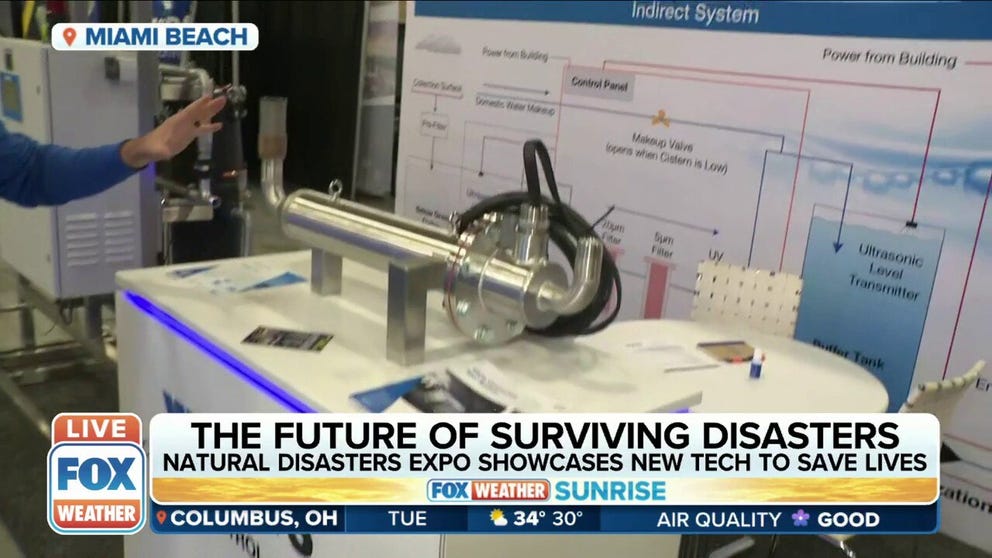‘Not just the hands:’ How to communicate natural disasters to deaf and hard-of-hearing community
Sign language and closed captioning are key to communicating severe weather
How natural disasters are communicated to deaf and hard-of-hearing community
Jenny Locy, with AQI Services, on the importance of having an American sign language interpreter on screen during weather emergencies.
MIAMI BEACH, Fla. --A large part of any weather event is conveying the severity of what is coming and communicating relief efforts after the fact to the entire population, including those with different needs.
Certified American Sign Language interpreters make sure 16% of the deaf and hard of hearing community knows what is coming. This week, a team from Absolute Quality Interpreting (AQI) Services was present in Miami Beach at the 2022 Natural Disaster Expo to talk about its communication services and the importance of including ASL in all disaster coverage.

Jenny Locy, with AQI Services, at the Natural Disaster Expo in Miami Beach on Feb. 8, 2022. (Image:Emilee Speck/FOX Weather)
(FOX Weather)
It's essential to have an American Sign Language interpreter on TV and to include more than just their hands in the video for an excellent reason. ASL is not just hand signs but expressions and body language.
THE FUTURE OF WILDFIRE DETECTION IS HERE: ARTIFICIAL INTELLIGENCE
"We take a lot of pride in our culture and sign language. Interpreters are very critical to the heart of our community so that we can communicate with the outside world. It's very important to provide American Sign Language, and with American sign language, so much meaning and grammar are on the face. It's not just on the hands," explained Jenny Locy, AQI marketing and training director, in ASL.
Examining hurricane technology at the National Disasters Expo
FOX Weather correspondent Steve Bender took a look at some of the hurricane technology at the National Disasters Expo.
The deaf and hard of hearing community look to expressions in the face and body to understand the seriousness of the situation. Take hurricane categories, for example. A certified interpreter would be much more expressive using their body to convey a Category 5 storm.
"It may a very dramatic when you're seeing an interpreter on screen … if it's a really serious, dangerous flood or wind, you have to show that emotion and facial expressions and body language and really show the intensity of what's happening with the weather," Locy said.
There are different versions of sign language worldwide, and body language helps bridge that gap to people who have recently moved to the U.S.
Aside from showing the whole person interpreting, Locy had some notes for news outlets covering the weather.
"It's very important to have an American sign language interpreter stay on the screen right next to the weather person who's speaking and not to shrink the interpreter down there will be very hard to see on a television screen," Locy said. "They need to be the same size as the meteorologist or whoever is there so that the headlines as they go across tend to block an interpreter if you put them down on the bottom corner and you can't see them."
Oklahoma meteorologist Mikayla Smith recently went viral after launching a series "Signing Science with Smith," a forecast using ASL.
The team at AQI Services loves this idea and hopes that American Sign Language could be part of all forecasts.
Also important is the ability to read closed captions on TV.
FROM FORECASTING TO FLOOD MITIGATION, IT'S ALL AT THE NATURAL DISASTER EXPO
"Closed captions are necessary and very important … and hard of hearing people do understand written English, but all of them do not, so captions are for people who understand how to read and write English, and also maybe somebody who came from a foreign language who is deaf … If they couldn't understand the sign language, they could understand that written English as well."
This is why it's important to have closed captioning and ASL during a news conference.
Locy spoke to FOX Weather under a similar setup as if she was signing next to a state or city official during a news conference. It's a team effort to ensure the deaf and hard of hearing communities are included. When you see an ASL interpreter on camera next to your state governor or official there is also one off-camera signing to the interpreter as she or he interprets what the official is saying to the ASL interpreter next to the official.
Locy is speaking at the Disaster Expo in Florida about the importance of communicating a disaster to all populations and continuing that even during cleanup efforts. Her keynote presentation is called "You are not reaching everyone" because, according to AQI Services, disaster communication could use improvement.
"There are people who come here on vacation, they come here for business trips, there are snowbirds, people retire here, so it's a very popular state for tourists," Locy said of Florida. "That's why it's critical that we have emergency communications to be provided both in English and in the form of captions and an American Sign Language interpreter."
There are less than 20,000 certified ASL interpreters in the U.S., just under 500 of those interpreters are in Florida.

